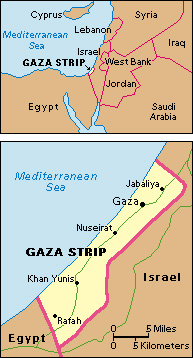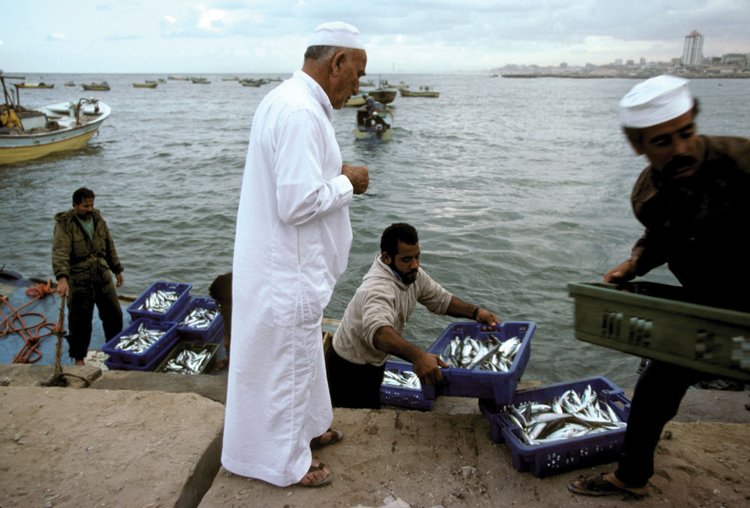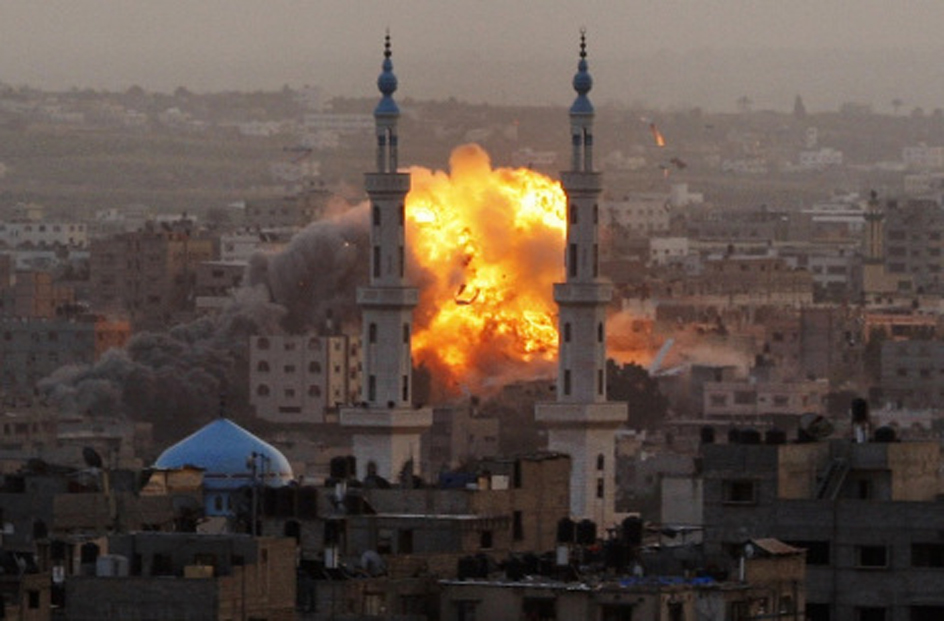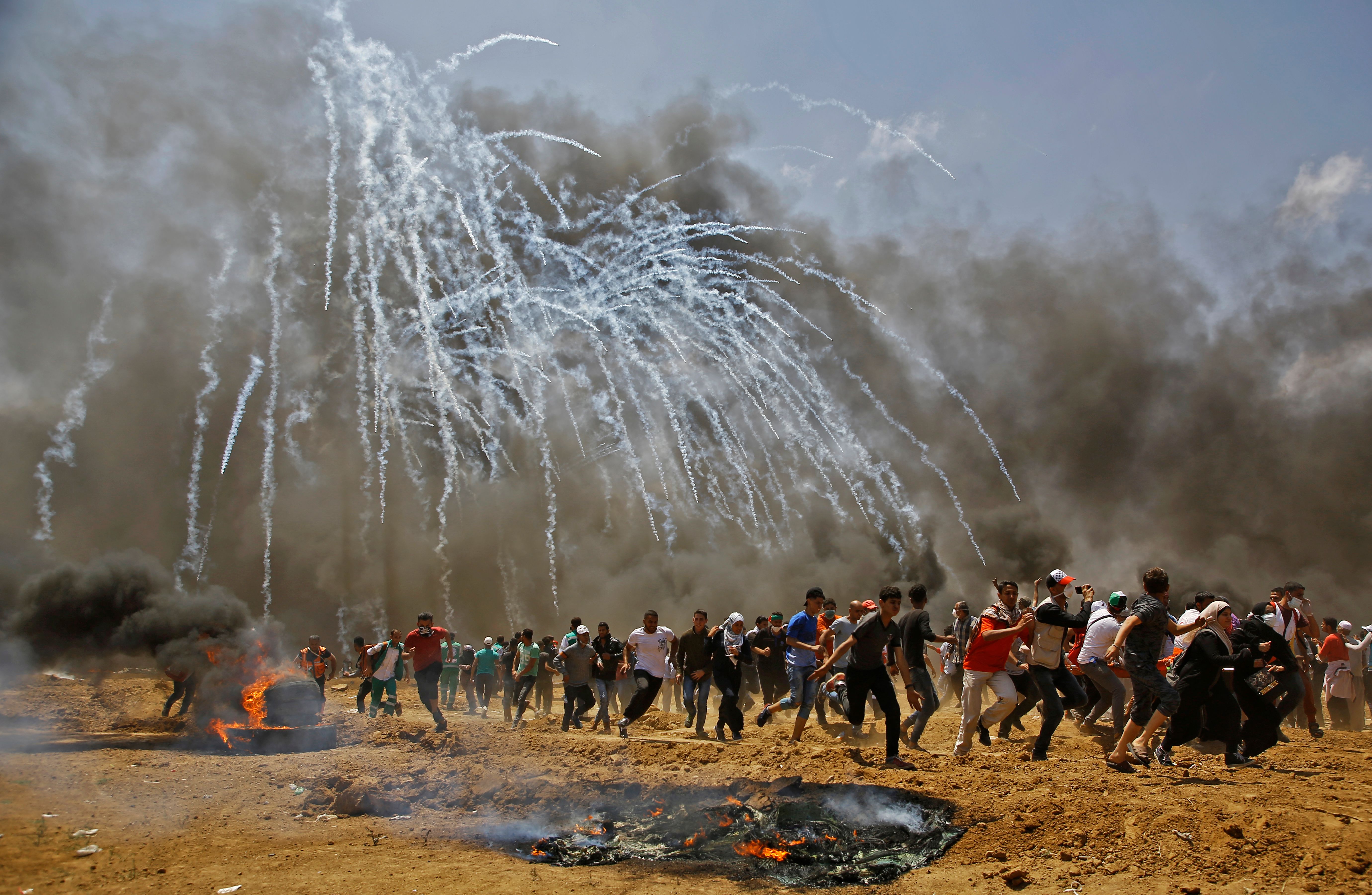Gaza << GAH zuh >> Strip is a territory on the eastern Mediterranean coast, where Egypt and Israel meet. It is part of the historic region of Palestine, which also includes Israel and the West Bank. Israel directly occupied the Gaza Strip from 1967 to 2005 and remains in control of its borders. The territory has been the site of many clashes between Palestinian Arabs and Israelis.

The Gaza Strip covers 139 square miles (360 square kilometers) and has a population of about 2,050,000. It is one of the most densely populated places in the world. Most of its land is sandy and flat. The traditional economy is based on agriculture, including such crops as citrus fruit and olives. Israel’s tight control of Gaza’s borders has resulted in shortages of many goods and services. When the border is open, many workers seek employment in Israel as day laborers.

In ancient times, the Gaza Strip was ruled by the pharaohs of Egypt. Later, at various times, it was ruled by Philistines, Jews, Arabs, and Turks. From 1920 to 1948, it was part of the British-ruled Mandate of Palestine. Egypt gained control of the strip during the Arab-Israeli war of 1948. Israel took control of the strip after the 1967 Six-Day War.
In the 1980’s, Palestinians in the Gaza Strip and the West Bank began a wave of protests, known as the intifada, against Israel’s occupation. Israeli forces clashed with protesters, killing many of them. In 1993, Israel and the Palestine Liberation Organization signed agreements that led to the removal of Israeli troops from densely populated Palestinian areas. In 1996, Palestinians in the Gaza Strip and the West Bank elected a legislature and a president. But there was still a large Israeli security presence, and Israeli citizens continued to build settlements in the areas.
In 2000, violence again broke out between Palestinians and Israeli forces. The struggle involved numerous attacks on Israelis by Palestinian suicide bombers and a widespread Israeli military campaign.
In 2005, Israeli soldiers and settlers withdrew from Gaza. However, Israel kept control of Gaza’s borders, coastline, and airspace. Many Palestinians complained that the Israeli occupation had not ended. Palestinian militants fired rockets into Israel and, in June 2006, kidnapped an Israeli soldier. Israel responded with a series of military attacks that killed hundreds of Palestinians.

In June 2007, Hamas, a radical Islamic organization and political party, seized control of the Gaza Strip by force. Palestinian President Mahmoud Abbas responded by dismissing the Hamas-led government and declaring a state of emergency. Israel imposed an embargo on the territory. Despite these actions, Hamas continues to control the strip.

Violence between Palestinians and Israeli forces—most notably in 2008, 2009, and 2012—claimed hundreds of lives, most of them Palestinian. In July 2014, Israeli soldiers entered Gaza after a sharp increase in cross-border violence. Over the next several weeks, more than 2,000 Palestinians were killed, as were dozens of Israelis. In October 2015, violence again flared up in Gaza and the West Bank, resulting in the deaths of dozens of people, most of them Palestinian. In the spring of 2018, Israeli security forces killed more than 100 Palestinians during large protests along the Gaza Strip’s border with Israel.
Some of the worst violence in the region since 2014 broke out between Israel and Palestinians in May 2021. Violence erupted as Israeli police attempted to evict Palestinian families from East Jerusalem, where they had lived for decades. It escalated during an incident in which the police entered Al Aqsa Mosque, one of Islam’s holiest sites, during Ramadan. Hamas responded by launching air strikes into Israel, and Israel fired air strikes into Gaza in return. The rockets launched by Hamas at several Israeli cities were largely intercepted by Israel’s defense system. Israel’s rockets struck a number of high-rise buildings in Gaza, including the offices of Hamas, as well as those of the Associated Press and Al Jazeera news services. More than 260 people—the majority of them Palestinians—were killed in the conflict, and hundreds more were injured. Hundreds of buildings in Gaza were destroyed, and tens of thousands of Palestinians were displaced. On May 20, Hamas and Israel agreed to a cease-fire.


In October 2023, Hamas launched a large-scale surprise attack against Israel from the Gaza Strip. The group not only launched rockets into Israel, but also broke through a barrier around Gaza and invaded Israel by land, killing about 1,200 people and taking more than 200 hostages. In response, Israel launched counterattacks against the invading Hamas militants and against many targets in Gaza. Thousands of people died in the conflict and thousands more were wounded, including many civilians on both sides.
See also Arab-Israeli conflict; Palestinian Authority.
